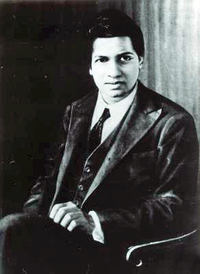Srinivasa Ramanujan Scientist
Srinivasa Ramanujan FRS (pronunciation: /sriː.ni.vɑː.sə rɑː.mɑː.nʊ.dʒən/) (22 December 1887 – 26 April 1920) was an Indian mathematician and autodidact who, with almost no formal training in pure mathematics, made extraordinary contributions to mathematical analysis, number theory, infinite series, and continued fractions. Ramanujan initially developed his own mathematical research in isolation, which was quickly recognized by Indian mathematicians. When his skills became apparent to the wider mathematical community, centered in Europe at the time, he began a famous partnership with the English mathematician G. H. Hardy. He rediscovered previously known theorems in addition to producing new work. Ramanujan was said to be a natural genius, in the same league as mathematicians such as Euler and Gauss.During his short life, Ramanujan independently compiled nearly 3900 results (mostly identities and equations). Nearly all his claims have now been proven correct, although a small number of these results were actually false and some were already known. He stated results that were both original and highly unconventional, such as the Ramanujan prime and the Ramanujan theta function, and these have inspired a vast amount of further research. The Ramanujan Journal, an international publication, was launched to publish work in all areas of mathematics influenced by his work.
Search
Scientist
| academic advisor | |
|---|---|
| Field of study | |
| influenced by |
Topical connections
Srinivasa Ramanujan on Wikipedia
External resources
- http://devbenegal.com/2006/03/15/feature-film-on-math-genius-ramanujan
- http://groups.yahoo.com/group/srinivasaramanujan
- http://intranet.woodvillehs.sa.edu.au/pages/resources/maths/History/Rmnjn.htm
- http://www.bbc.co.uk/radio4/science/further5.shtml
- http://www.cecm.sfu.ca/organics/papers/borwein/paper/html/local/ramnotebook.html
- http://www.friedeye.com/2011/01/01/ramanujan
- http://www.hindu.com/2003/12/22/stories/2003122204061100.htm
- http://www.hindu.com/mag/2004/12/26/stories/2004122600610400.htm
- http://www.hindu.com/thehindu/br/2003/08/26/stories/2003082600120300.htm
- http://www.hindu.com/thehindu/mag/2002/12/22/stories/2002122200040400.htm
